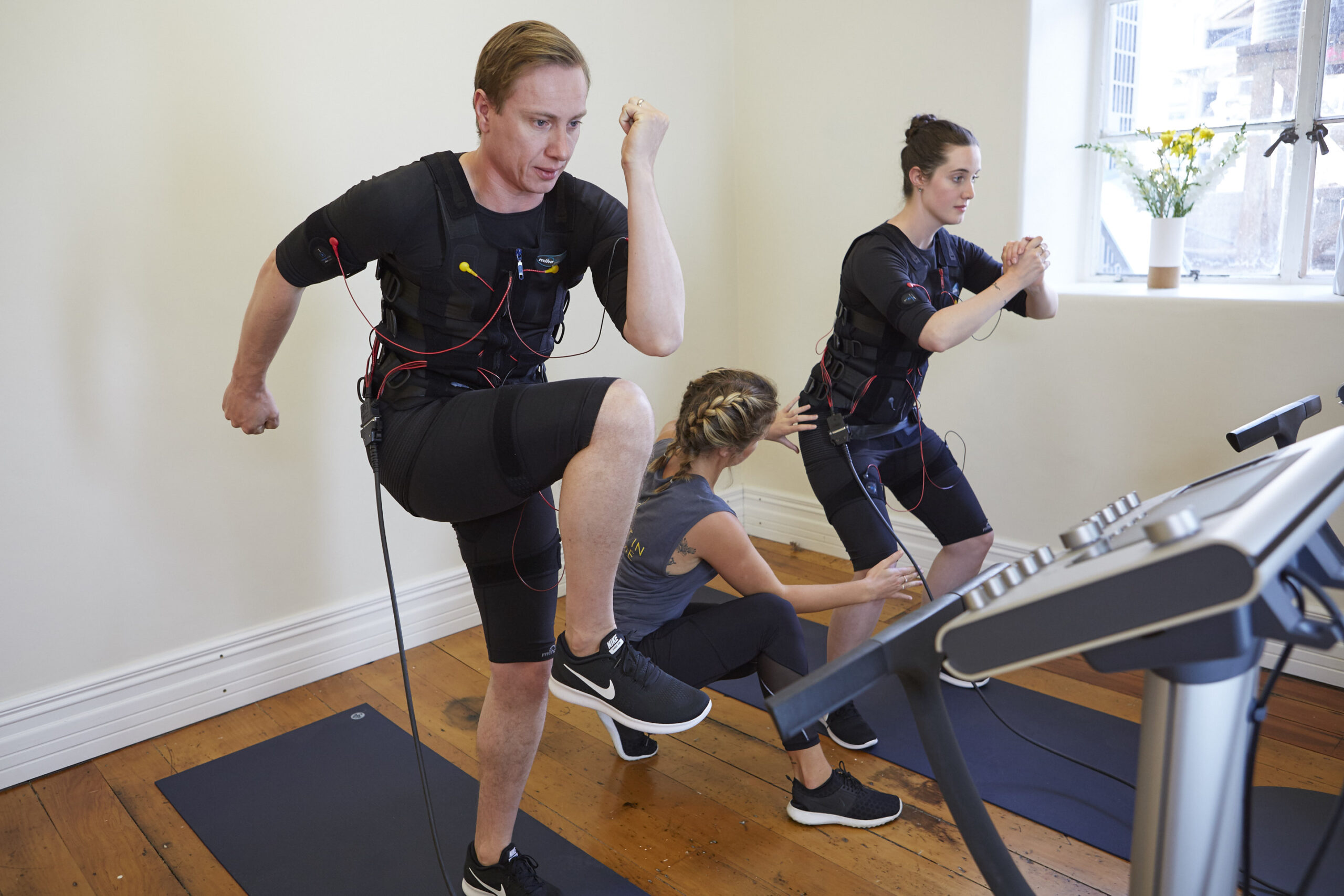Want to get into shape for summer but just not motivated with your current workout regime? Good recently discovered a new type of training – fu/nis EMS (electric muscle stimulation). We talked to Catrina Koehler, owner of New Zealand’s first clinic offering the service about what it entails.
How did you come about fu/nis EMS training and how long ago was that?
I discovered EMS training in 2010 whilst still living in Germany, just before my wedding. With my usual workout routine I wasn’t able to shake this ‘annoying’ extra kilo and my arms just didn’t feel toned enough. In just a few EMS sessions, I was able to achieve those goals – trust me I was stoked. Apart from it being so effective for this occasion, I sticked with it and loved that it was so fast which was a much appreciated benefit for me in my busy life with working in corporate at that time. Fu/nis EMS training is the brand and company I founded end of 2016 to finally offer this timesaving, fun & effective training to us busy Auckland’er.

What does it involve?
EMS training is a very time efficient full-body workout, and even though you might feel quite futuristic when you jump into the gear, it’s not rocket science. Basically, EMS training just takes your normal workout to the next level.
EMS stands for Electro-Muscle Stimulation. This means that the skeletal muscles are contracting through the effect of low-frequency electric impulses (it’s safe – they do not affect smooth muscles such as major organs). It is no different to conventional training or daily activities, where the muscles are contracted and controlled by electrical signals sent by the Central Nervous System (CNS) however EMS training ‘mimics’ what your brain normally does but at a higher rate, making it more efficient. The agonist, antagonist and deeper-lying muscles are all simultaneously stimulated. As a result users are able to gently and effectively train both specific muscle groups as well as their whole body. As we can control every major muscle group indicudally, we can attend to specific needs (like focus on strengthening the core) or can work-around e.g. injuries or body weaknesses.

How is it proven to be effective and what are your personal experiences with the training?
Worldwide EMS training is used by professional athletes like Usain Bolt or Roger Federer, celebrities like Madonna and us ‘normal’ people who live a busy life and don’t want to drop exercise for all our the other commitments.
EMS training in the form of a full-body workout is around since approx. 2007, and in our studio we can see why it is so successful. Our clients love the time saving aspect, the intensity of the session, and of course the feeling of achieving their goals; such as toning and strengthening their muscles, decreasing body fat, and even an improved feeling of health overall.
We are using the EMS technology of the market leader MIHA bodytec (r) from Germany. They have been always investing in research, so there are lots of studies available how you as an individual can benefit from full-body EMS training which is re-assuring for us to have. That said, the technology is around since the 1960’s and is used successfully in rehabilitation.
Your fu/nis EMS training studio is the first in New Zealand. Why do you think it hasn’t taken off before?
I wouldn’t say it hasn’t taken off yet, it’s just that nobody brought it over yet to Auckland & NZ in the way I did. I see no reason why EMS training won’t be accepted by us here, as saving time in your day is specially for us busy city dweller a major benefit. What would you do with 1 hour extra in your day?
How is it different to other workouts with regards to time and frequency?
Thanks to the EMS technology, in 20minutes you will train your body as you would in 60-90 minutes of conventional training in the gym. Your muscles experience in EMS training a much more intensive training stimuli. You get a full-body workout through the simultaneous tensioning of all major muscle groups and the stabilising muscles which are hard to reach with classic methods. The workout can be so effective as your body is worked against higher intensity and tires quicker, thus only needing 20 minutes of workout time – once, max twice a week.
What does fu/nis stand for?
fu/nis is latin, and translates as umbilical cord. During your EMS session you are connected to the unit with a cord. This cord allows the impulses to come through to give you the workout you want. Besides the technological aspect, this cord is key for your EMS training – hence the name 🙂







